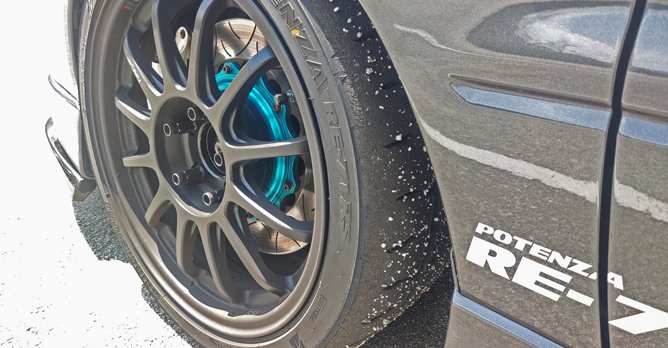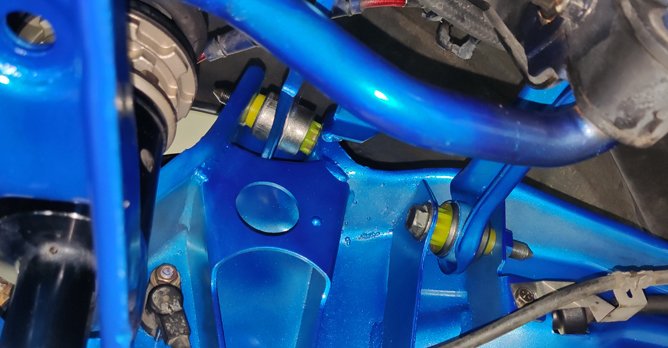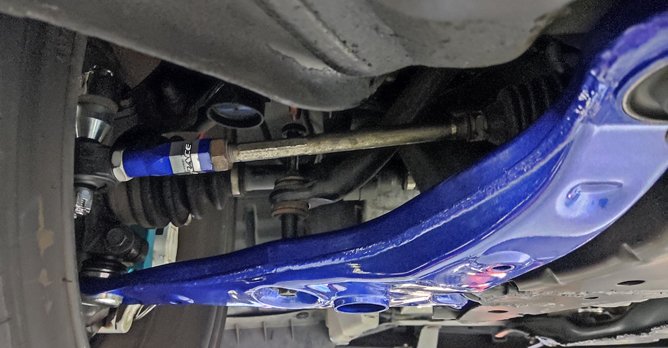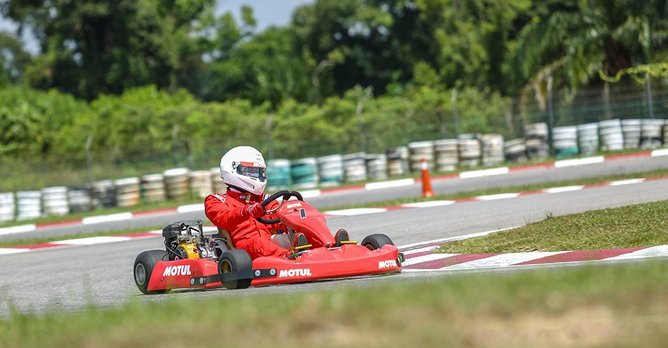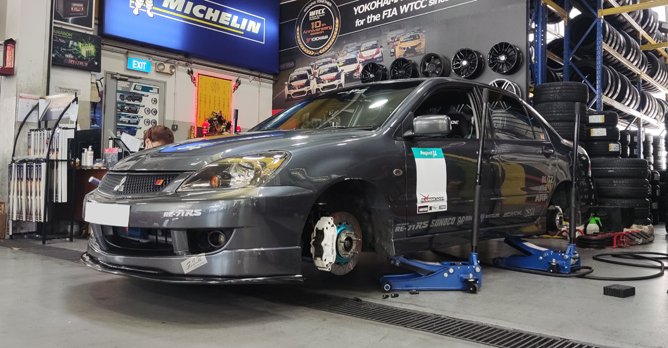What they don't tell you: Lowering your car with coilovers isn't going to magically perfect its handling
22 Jul 2022|17,323 views
After discussing the downsides of a big brake kit, this time round, we will touch on the myths and pitfalls when trying to improve the handling of your car. Getting a car to handle perfectly is a monumental task that involves plenty of convoluted calculations - you definitely have to be some kind of engineer to truly understand the subject. Even if you passed me the spreadsheet or program that professionals use to determine the suspension settings of a race car, I wouldn't be able to make sense of it!
Because of that, many might just go with the simple approach of "if it's lower and stiffer, my car will handle better". But that would be erroneous! You could easily ruin the comfortable ride while still ending up with a car that handles worse than before. Today, we'll explore the myths when trying to improve the handling of your car with a set of coilovers, in simple terms that normal car enthusiasts like us can all understand.
1. A set of coilovers is all you need to make your car handle like it is on rails!
Budding enthusiasts might often think the journey to improving a car's cornering performance starts and ends at a set of coilovers. But there really is much more to it.
Before we dive into the topic of suspensions, we'll need to understand this - tyres are the only points of contact between your car and the road.
In fact, a good suspension system works by ensuring that your tyres are always firmly pushed to the ground in order to achieve the highest level of grip.
Now, even with good tyres and a set of coilovers, there are still many more components which can be altered to improved handling and cornering performance.
This includes the rubber bushings in the suspension system. If you are going to chase performance, you would want to replace these bushings to stiffer rubber, polyurethane or even metal spherical bearings for a more precise handling at the cost of some vibration and harshness.
With the suspension components sorted, there's still the concern of stiffening up the car's chassis to allow the suspension to do its job properly.
And then there's the complicated and tricky matter of fine tuning the suspension geometry of your lowered and stiffened car to ensure satisfactory performance, which brings us to the next point...
2. The lower the car is, the more stable it will be
Lowering a car will make it more stable due to its lower centre of gravity. That's why race cars and supercars are all really low, just look at F1 cars and the non-SUV models from brands like Ferrari, Porsche and Lamborghini. So, a lower car will always handle better, right? At least that's what most will think.
However, it isn't that simple, one has to consider what lowering a car does to its suspension geometry. You see, the suspension geometry of each road-going car was carefully designed by an automotive engineer for safe and predictable driving characteristics at the original ride height. Once you meddle with the ride height of your car, you would be altering these characteristics, and often for worse.
An important point would be the roll centre - the pivot point of which your car body rolls when making a turn.
The exact explanation of how it all works is pretty complicated, but the rough idea is that when you lower your car without correcting the suspension geometry, the roll centre will be lowered, effectively resulting in more body roll.
While you might not feel it due to the stiffer springs in your new coilovers, you are actually making your car more inclined to roll when you over-lower your car, thus overloading the tyres and causing the limits of grip to be exceeded more easily.
Overly lowered cars can also run into bump-steer issues, this refers to the wheel direction being altered when going over a bump, which can cause unpredictable handling and affects the cornering performance.
The solution for the layman is to avoid lowering a car too much, or to opt for roll-centre correction and bump steer correction kits. But without in-depth knowledge in the topic and complicated maths, most of us will just be able to correct the geometry to a rough ballpark.
3. Stiffer suspension is always better!
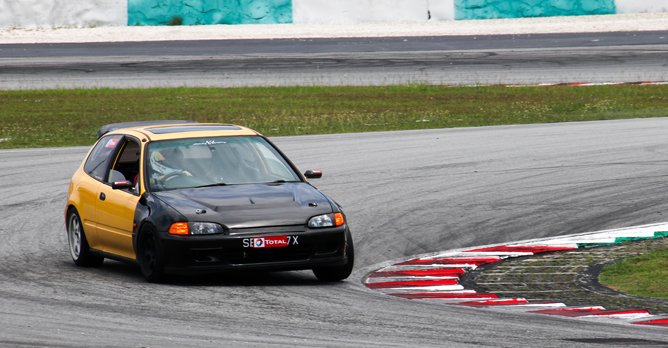
But that's not necessarily the case, and there's a couple of reason why stiffest isn't always better. Remember the suspension's main job of ensuring consistent contact between the tyres and the road surface?
Well, if your suspension is too stiff, it will not absorb all the bumps and shocks from uneven surfaces (such as the public roads we drive on), which will result in an uncomfortable ride and less traction as your car's tyres will be skipping over the surface.
Contrary to common thinking, even with stiffer suspension and limited body roll, weight transfer still happens - even though your car might not be pitching as much to one side. What happens is this weight transfer happens way quicker, giving a sense of a more immediate response when you turn the steering wheel.
While the darty and quick response might feel good, it can also result in a 'nervous' handling which can make it more difficult to control the car at its limits. Just think of a go-kart - without any suspension, there's close to zero body roll, which makes it very responsive, but very easy to lose control when you reach the limits of grip as well.
Without the lightning-quick reflexes of a professional driver and the run-off area of a race track, you can easily get into trouble when driving such a car.
4. The most expensive, top-of-the-line adjustable coilover is the best choice
Like most things, coilovers are also available in many different tiers. Entry level models usually offer limited adjustments - the damping might be fixed and the only thing you can adjust might just be the ride height.
Meanwhile, top-tier coilovers that can cost more than $10,000 tend to offer all sorts of adjustments.
A top-tier coilover will often include separate adjustments for low speed and high speed compression and rebound settings for the damper - that's four items to consider when setting the damper! And we haven't even considered other adjustments such as the length of the coilover, which affects the droop and compression length - these are usually adjustable from mid-tier coilovers onwards.
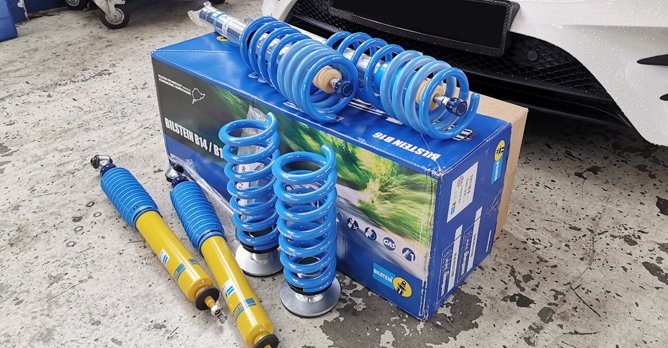
Hence, for the layman, you will likely be better off saving your money and opting for an entry-level coilover from a reputable brand. This way, most of the settings, while unadjustable, would have been optimised by the manufacturer to suit your particular brand and model of car.
So, what should I do?
Well, by now you'll know there's plenty more to improving a car's handling than a set of expensive coilovers. For most of us who aren't driving dedicated track or race cars, the safest option is to avoid taking an extreme approach to such modifications. Don't over-lower your car, and don't overspend on top-tier components that are out of our depth and you'll be fine.
However, if you are out to chase every second on the race track, then you might want to consult experts on the subject to set up your car correctly. Here are some recommended specialist workshops that can help you to improve your car's handling.
Want to know more about modifying your car? Check out these articles:
What they don't tell you: The downsides of installing a big brake kit
6 types of car performance modifications to make your car faster on the track
5 types of car aesthetic modifications you should do
We found 10 cool-looking Japanese car modifications right here in Singapore!
These boy racer mods are making your car worse
While coilovers isn't the only mod to improve your car's handling, it is still an important piece of the puzzle to a great handling car. If you want to get one, here are some that you can consider.
After discussing the downsides of a big brake kit, this time round, we will touch on the myths and pitfalls when trying to improve the handling of your car. Getting a car to handle perfectly is a monumental task that involves plenty of convoluted calculations - you definitely have to be some kind of engineer to truly understand the subject. Even if you passed me the spreadsheet or program that professionals use to determine the suspension settings of a race car, I wouldn't be able to make sense of it!
Because of that, many might just go with the simple approach of "if it's lower and stiffer, my car will handle better". But that would be erroneous! You could easily ruin the comfortable ride while still ending up with a car that handles worse than before. Today, we'll explore the myths when trying to improve the handling of your car with a set of coilovers, in simple terms that normal car enthusiasts like us can all understand.
1. A set of coilovers is all you need to make your car handle like it is on rails!
Budding enthusiasts might often think the journey to improving a car's cornering performance starts and ends at a set of coilovers. But there really is much more to it.
Before we dive into the topic of suspensions, we'll need to understand this - tyres are the only points of contact between your car and the road.
In fact, a good suspension system works by ensuring that your tyres are always firmly pushed to the ground in order to achieve the highest level of grip.
Now, even with good tyres and a set of coilovers, there are still many more components which can be altered to improved handling and cornering performance.
This includes the rubber bushings in the suspension system. If you are going to chase performance, you would want to replace these bushings to stiffer rubber, polyurethane or even metal spherical bearings for a more precise handling at the cost of some vibration and harshness.
With the suspension components sorted, there's still the concern of stiffening up the car's chassis to allow the suspension to do its job properly.
And then there's the complicated and tricky matter of fine tuning the suspension geometry of your lowered and stiffened car to ensure satisfactory performance, which brings us to the next point...
2. The lower the car is, the more stable it will be
Lowering a car will make it more stable due to its lower centre of gravity. That's why race cars and supercars are all really low, just look at F1 cars and the non-SUV models from brands like Ferrari, Porsche and Lamborghini. So, a lower car will always handle better, right? At least that's what most will think.
However, it isn't that simple, one has to consider what lowering a car does to its suspension geometry. You see, the suspension geometry of each road-going car was carefully designed by an automotive engineer for safe and predictable driving characteristics at the original ride height. Once you meddle with the ride height of your car, you would be altering these characteristics, and often for worse.
An important point would be the roll centre - the pivot point of which your car body rolls when making a turn.
The exact explanation of how it all works is pretty complicated, but the rough idea is that when you lower your car without correcting the suspension geometry, the roll centre will be lowered, effectively resulting in more body roll.
While you might not feel it due to the stiffer springs in your new coilovers, you are actually making your car more inclined to roll when you over-lower your car, thus overloading the tyres and causing the limits of grip to be exceeded more easily.
Overly lowered cars can also run into bump-steer issues, this refers to the wheel direction being altered when going over a bump, which can cause unpredictable handling and affects the cornering performance.
The solution for the layman is to avoid lowering a car too much, or to opt for roll-centre correction and bump steer correction kits. But without in-depth knowledge in the topic and complicated maths, most of us will just be able to correct the geometry to a rough ballpark.
3. Stiffer suspension is always better!

But that's not necessarily the case, and there's a couple of reason why stiffest isn't always better. Remember the suspension's main job of ensuring consistent contact between the tyres and the road surface?
Well, if your suspension is too stiff, it will not absorb all the bumps and shocks from uneven surfaces (such as the public roads we drive on), which will result in an uncomfortable ride and less traction as your car's tyres will be skipping over the surface.
Contrary to common thinking, even with stiffer suspension and limited body roll, weight transfer still happens - even though your car might not be pitching as much to one side. What happens is this weight transfer happens way quicker, giving a sense of a more immediate response when you turn the steering wheel.
While the darty and quick response might feel good, it can also result in a 'nervous' handling which can make it more difficult to control the car at its limits. Just think of a go-kart - without any suspension, there's close to zero body roll, which makes it very responsive, but very easy to lose control when you reach the limits of grip as well.
Without the lightning-quick reflexes of a professional driver and the run-off area of a race track, you can easily get into trouble when driving such a car.
4. The most expensive, top-of-the-line adjustable coilover is the best choice
Like most things, coilovers are also available in many different tiers. Entry level models usually offer limited adjustments - the damping might be fixed and the only thing you can adjust might just be the ride height.
Meanwhile, top-tier coilovers that can cost more than $10,000 tend to offer all sorts of adjustments.
A top-tier coilover will often include separate adjustments for low speed and high speed compression and rebound settings for the damper - that's four items to consider when setting the damper! And we haven't even considered other adjustments such as the length of the coilover, which affects the droop and compression length - these are usually adjustable from mid-tier coilovers onwards.

Hence, for the layman, you will likely be better off saving your money and opting for an entry-level coilover from a reputable brand. This way, most of the settings, while unadjustable, would have been optimised by the manufacturer to suit your particular brand and model of car.
So, what should I do?
Well, by now you'll know there's plenty more to improving a car's handling than a set of expensive coilovers. For most of us who aren't driving dedicated track or race cars, the safest option is to avoid taking an extreme approach to such modifications. Don't over-lower your car, and don't overspend on top-tier components that are out of our depth and you'll be fine.
However, if you are out to chase every second on the race track, then you might want to consult experts on the subject to set up your car correctly. Here are some recommended specialist workshops that can help you to improve your car's handling.
Want to know more about modifying your car? Check out these articles:
What they don't tell you: The downsides of installing a big brake kit
6 types of car performance modifications to make your car faster on the track
5 types of car aesthetic modifications you should do
We found 10 cool-looking Japanese car modifications right here in Singapore!
These boy racer mods are making your car worse
While coilovers isn't the only mod to improve your car's handling, it is still an important piece of the puzzle to a great handling car. If you want to get one, here are some that you can consider.









